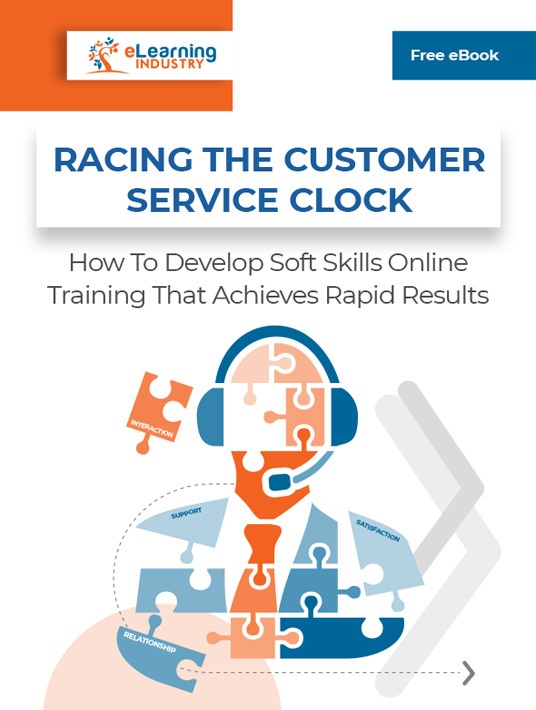Improving Soft Skills In Onboarding Online Training
You need to bring new hires up to speed and fine-tune their talents to meet organizational standards and fulfill their true potential. But you don't have a lot of money to spend on training pursuits, even though you know L&D is essential. So, how do you improve soft skills in onboarding online training without going over budget? The secret is, having a multipronged approach that combines existing resources, pre-assessment, and peer support. Get everyone involved and encourage experienced employees to step up and share their wisdom. Here are 6 tips for how to improve soft skills in onboarding online training that cut costs without compromising staffer engagement.

1. Pair New Hires With Experienced Staffers
New hires can benefit from co-workers' experience and insider know-how. Pair employee training participants with seasoned staffers who exhibit stellar soft skills. Peer coaches should be willing to meet with new hires periodically to assess their progress and offer support. As well as provide a fresh list of resources, employee training participants can use to expand their skill set. This also gives coaches/mentors the chance to showcase the skill and prevent common mistakes. For instance, walk employee training participants through the task to demonstrate how to apply conflict resolution or empathy skills.
2. Launch A Social Media Support Group
Employees already spend a fair amount of time on social media. So, why not reach them where they are by launching an online support group. For example, one social media group centers on customer service soft skills. Employee training participants can share personal stories, challenges, and tips to help their peers and identify areas for improvement. It's a closed group, so they don't have to worry about posting their 'weaknesses' in a public forum. This is also a centralized place for them to post relevant online resources and chat about upcoming online training events or task changes.
3. Add Simulations To Foster Real-World Application
Simulations are the go-to resource for soft skills in onboarding online training because they immerse new hires in the scenario. They must use their skills to resolve the issue or boost their performance. For example, the simulated customer walks into the store with a return… that's a year past the deadline. How can the employee tactfully explain the situation and satisfy the consumer without breaching company policy? Might they suggest add-ons or accessories for improving the functionality of the product? Can they possibly service the item if it's simply a matter of repair? Apply just enough pressure to test their proficiency without making them feel overwhelmed.
4. Pre-Assess To Pinpoint Areas For Improvement
The most cost-effective for how to improve soft skills in new hire online training is to identify the skills they lack. Then focus on those areas for improvement to reduce spending. Instead of trying to address every competency that they require on-the-job. For instance, most of your new hires already possess strong communication skills. But problem-solving and creativity need some work. Pre-assess to pinpoint the gaps and customize your approach. This also boosts employee training participants' engagement because they maintain forward momentum instead of covering redundant skill sets. Employees aren't bored to death by rudimentary competencies they've already mastered. They're able to concentrate on gaps that hinder workplace performance and make their first day on the job even more stressful.
5. Repurpose Existing Resources To Create A JIT Library
You may already have online resources you can use in your current new hire soft skills online training course. The trick is knowing where to look and what to look for. Take stock of your online training library with a specific soft skill in mind. Maybe you need to bolster active listening or non-verbal communication skills. Could you reuse a safety demo video that features 2 co-workers involved in a workplace spat? Use an eLearning authoring tool to break up the footage and repurpose the scenes you need. This could be the ideal "don't" for your soft skills demo. Then record a brief "do" clip to show employees how it's done. They get to see the right and wrong way to apply active listening on-the-job to identify someone's' needs. Or learn how to read facial expressions more effectively to prevent simple misunderstandings.
6. Gamify To Track Skill Development
Gamify your entire new hire course for building soft skills in onboarding online training. Every skill earns a new badge they can show off to peers, or moves them one spot up the leaderboard. Which motivates new employees and enables you to track their progress. Those who don't earn rewards are candidates for peer coaching or training contracts. Just make sure the incentives support desired performance behaviors. Employees should hone their skills instead of simply trying to earn points by acing the final exam. Also, include a good mix of game mechanics to cater to different preferences. Not everyone wants to compete against peers to reach #1 on the board.
Improving soft skills in onboarding online training doesn't have to drain your company coffers. Especially if you're an SMB, who can't afford VR simulations or celebrity live event hosts. These 6 tips can help you reduce costs and maximize online training engagement. Not to mention, practical application. Reuse what you already have, launch a social media group, and incorporate rewards to track progress—and motivate employee training participants. If you do have room in your budget, consider hiring an outsourcing partner to develop simulations and scenarios for new hire online training. Their insider expertise can help you improve ROI and repurpose existing resources.
If you need to learn more about the importance of honing soft skills in the workplace, read our eBook Racing The Customer Service Clock: How To Develop Soft Skills Online Training That Achieves Rapid Results and find out all the benefits of investing in your employees' soft skills training.








